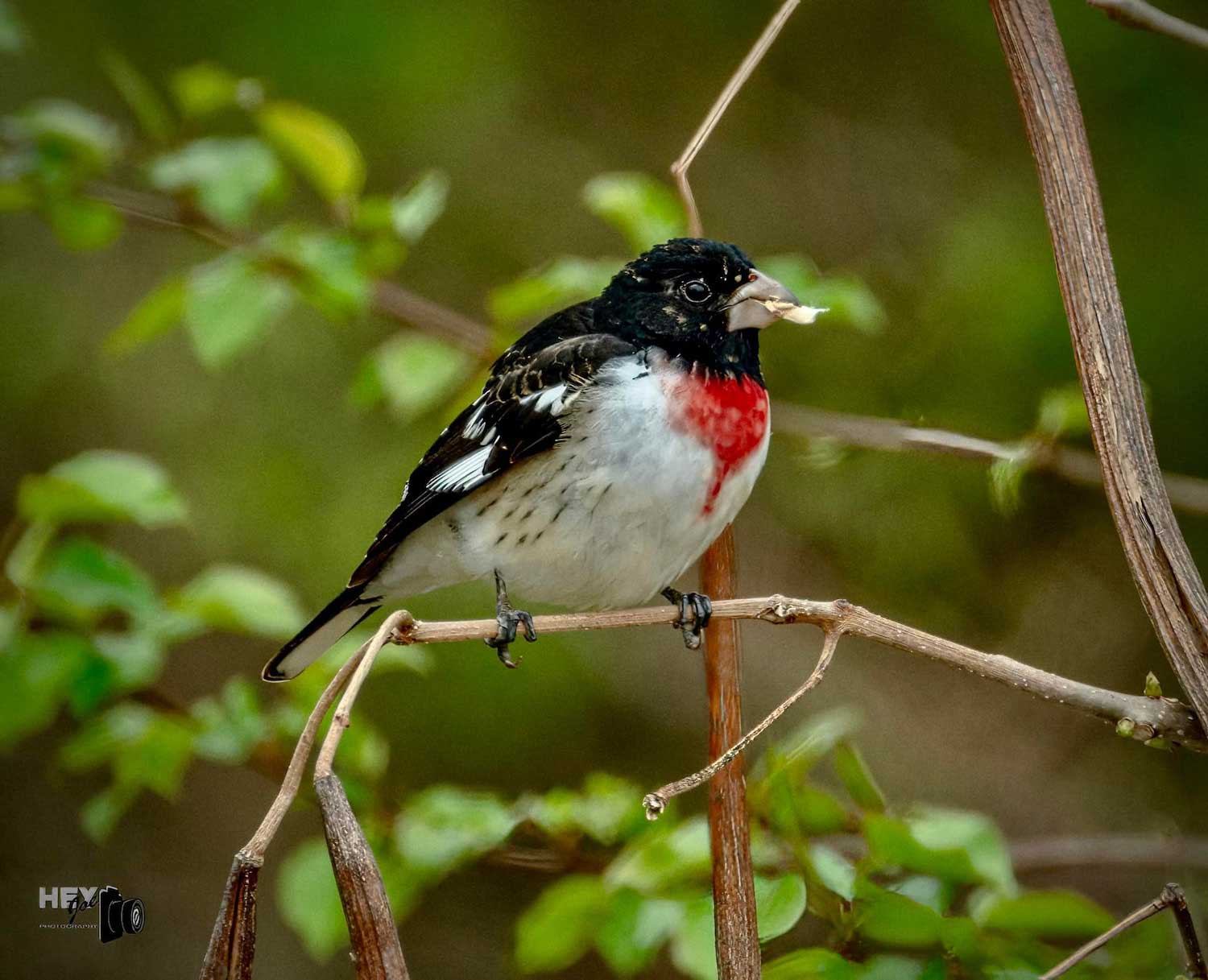The rose-breasted grosbeak: A pretty bird with a pretty song

For many people, the sight of a rose-breasted grosbeak at a backyard bird feeder or even flitting about woodlands is a welcome one. These birds — the males at least — are easy to identify from their eye-catching plumage, which is stark black and white save for their namesake rose-colored breasts.
That rose-colored breast has earned them the nickname cutthroat, but it only applies to the adult male birds. Female and immature rose-colored grosbeaks are quite plain in comparison, with streaky brown on their wings and backs with lighter colored breasts and a white stripe at their eyes that can aid in identification.
These birds' colorful breasts aren't the only part of their name based on their appearance. The word grosbeak is derived from the French word grosbec, which means large beak, according to the American Bird Conservancy, and the term certainly does fit the bill (pun intended).
Their chunky bills allow them to make quick work of seeds, and particularly in the spring they can be easy to attract to bird feeders because of their affinity for seeds. If you want to attract them to your yard, try stocking feeders with sunflower seeds, safflower seeds or raw peanuts, the Cornell Lab or Ornithology suggests.
While skilled seed eaters, rose-breasted grosbeaks actually have quite variable diets. During fall migration, they consume a lot of berries. In the summer breeding season, they eat insects, seeds and fruits, the Cornell Lab reports. Rose-breasted grosbeaks winter in tropical regions of Mexico, Central America and South America, and while there they eat a combination of insects and other invertebrates as well as plant matter. They usually eat while perched on branches, but they can snatch insects out of the air.
During the breeding season, rose-breasted grosbeaks primarily live in deciduous forests, thickets and other semi-open areas. They prefer to be high up in the canopy of the trees and aren't usually seen down low unless they are visiting bird feeders, bird baths or another source of water, the American Bird Conservancy reports.
They nest in trees or sometimes shrubs, with the male and female working together over several days to construct a nest from sticks, twigs, plant stems, grasses and straw, the Cornell Lab reports. Their nests are not very solidly built, and the eggs can sometimes be seen through the weaved together nesting materials.
Females will lay between one and five eggs in each clutch, and they can have one or two broods each breeding season. Eggs are a speckled pale blue or green. The female birds are primarily responsible for incubation, but the male birds will take a turn incubating for several hours a day. The eggs hatch after about two weeks, and the young birds stay in the nest for between nine and 12 days after hatching.
Both male and female rose-breasted grosbeaks sing, which is not common among songbirds, and they are one of the few birds that will sing from their nests, according to the Cornell Lab. They can be identified by their song if you have a good ear. Their song is said to sound similar to that of a robin, but more melodious and sweet sounding. The birds also have a call that might sound familiar. Their "eek" call is said to sound like the squeak of a gym shoe on a gym floor.
The rose-breasted grosbeak is among a handful of grosbeak species that live in the United States, but it is the only one seen in northern Illinois with regularity. The evening grosbeak may be seen in Illinois on rare occasions, but sightings are usually few. These eye-catching black, yellow and white birds mostly stick to the forests of Canada and the far northern United States, but flocks of them may occasionally migrate as far as Illinois and points south while searching for food, the Cornell Lab reports. Similarly, the North American range of the reddish-pink pine grosbeak is limited to Canada and the far northern United States.
The blue grosbeak's range includes southern Illinois as well as parts of the Plains, the south, the southeast and the southwest as well as Mexico and the Caribbean nations, but this bird isn't typically seen in the north and the northeast, according to the Cornell Lab. And the black-headed grosbeak lives only in western North America, not venturing as far east as the Mississippi River.
